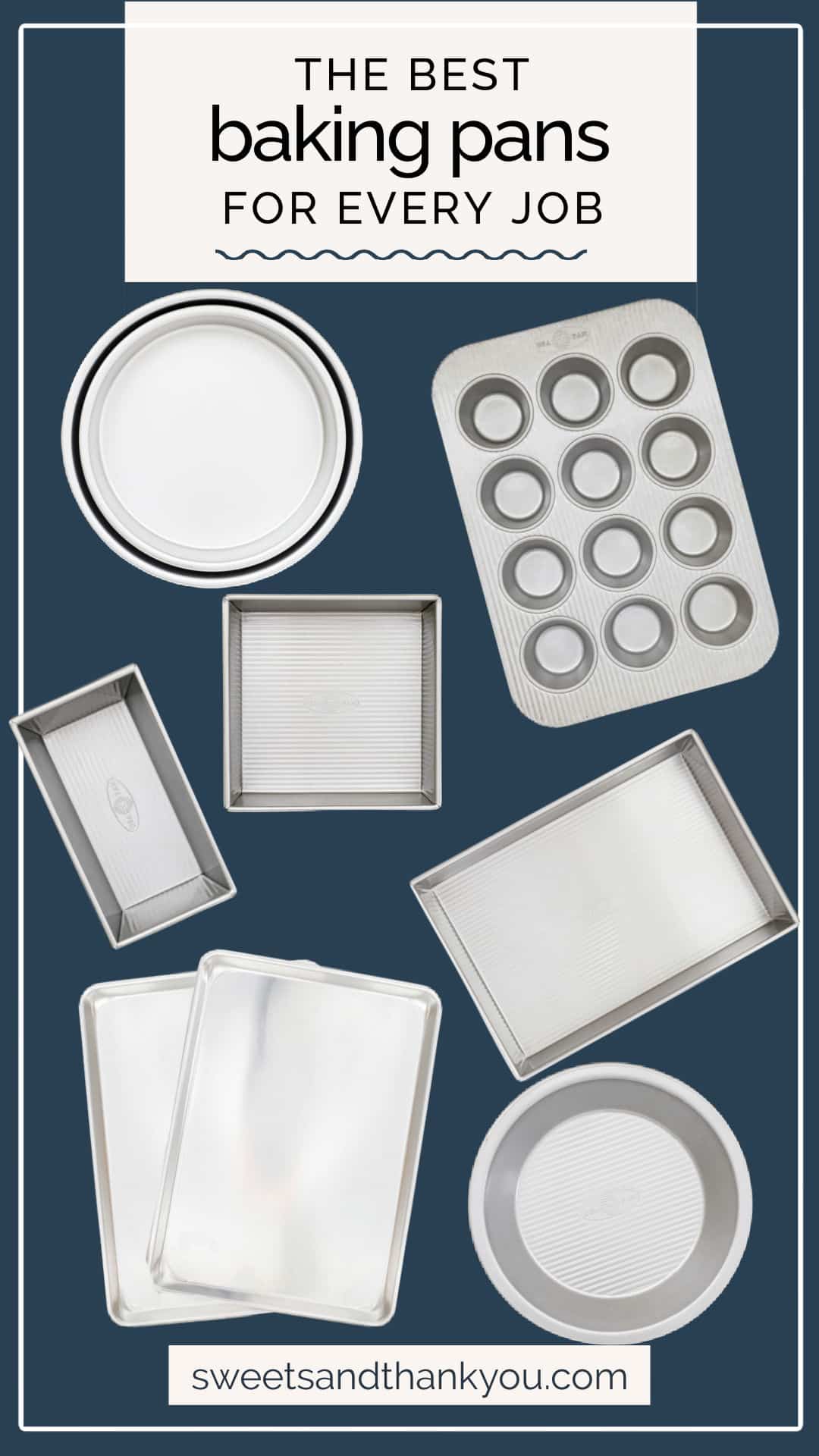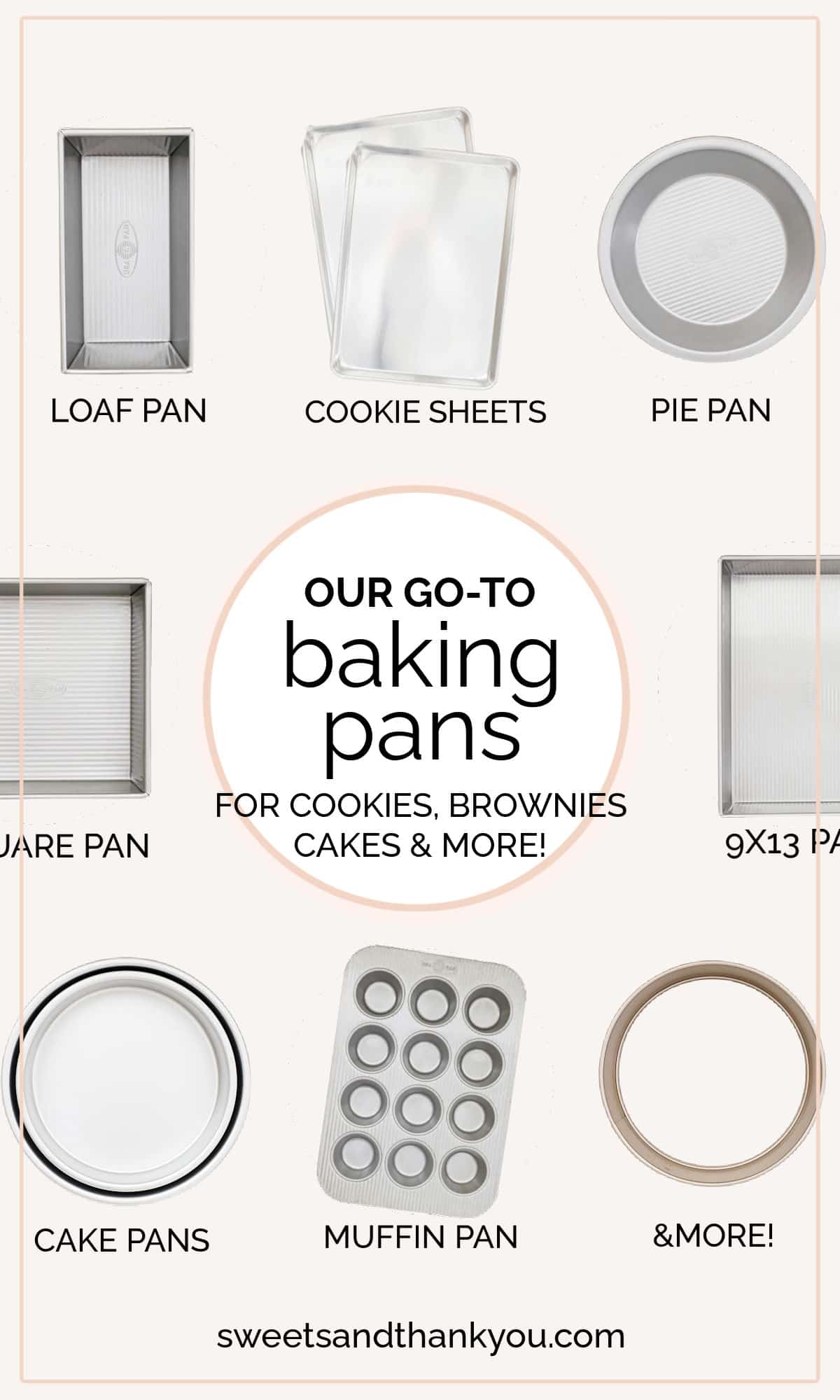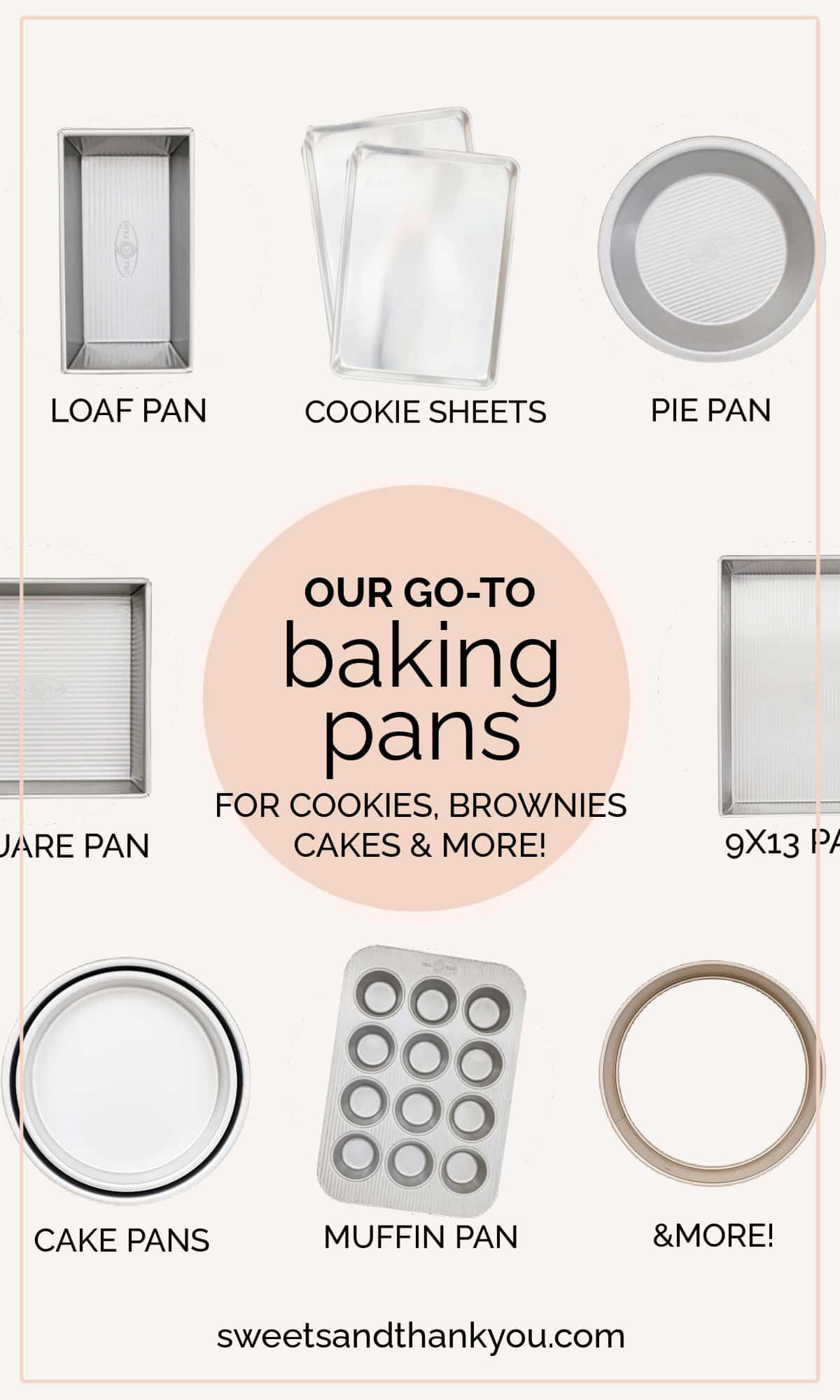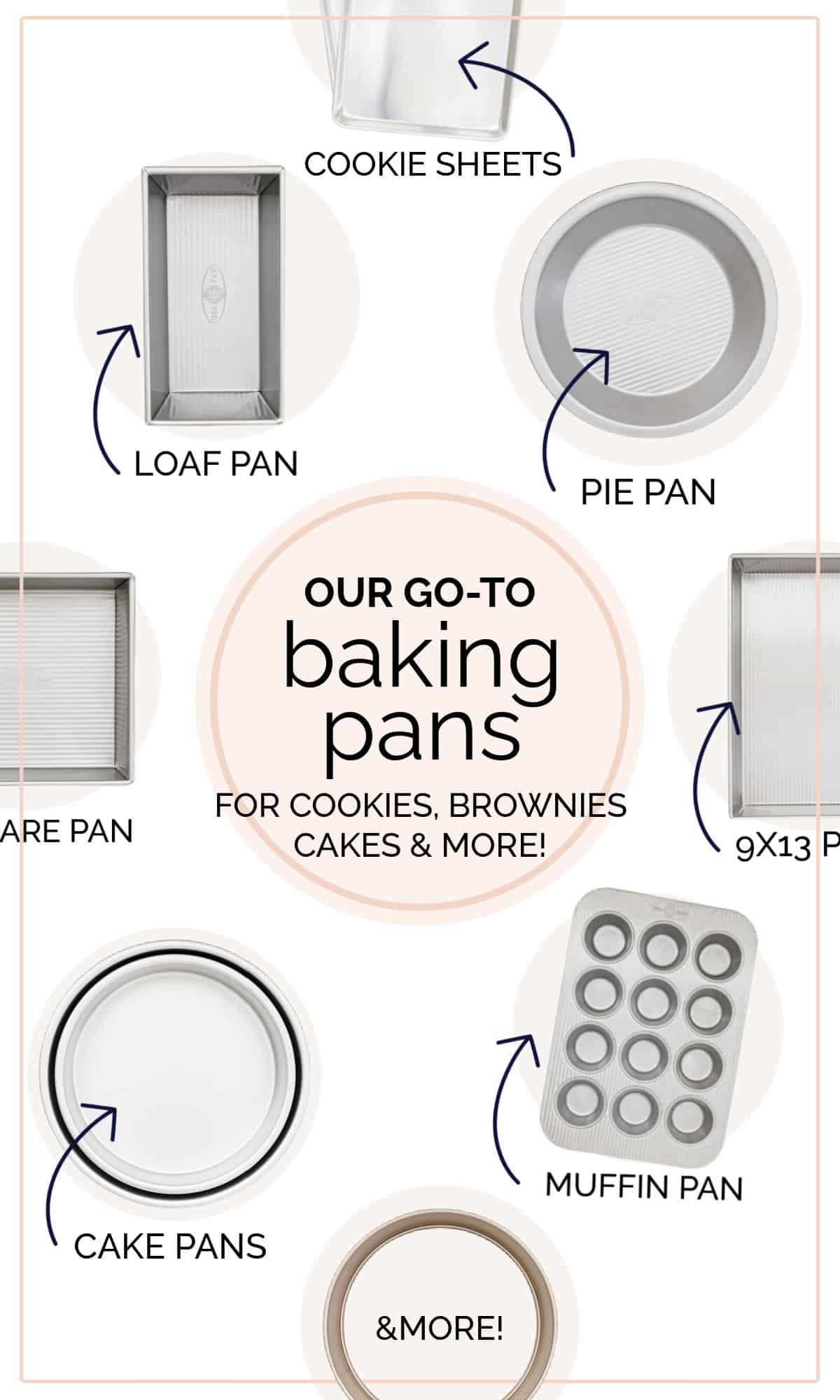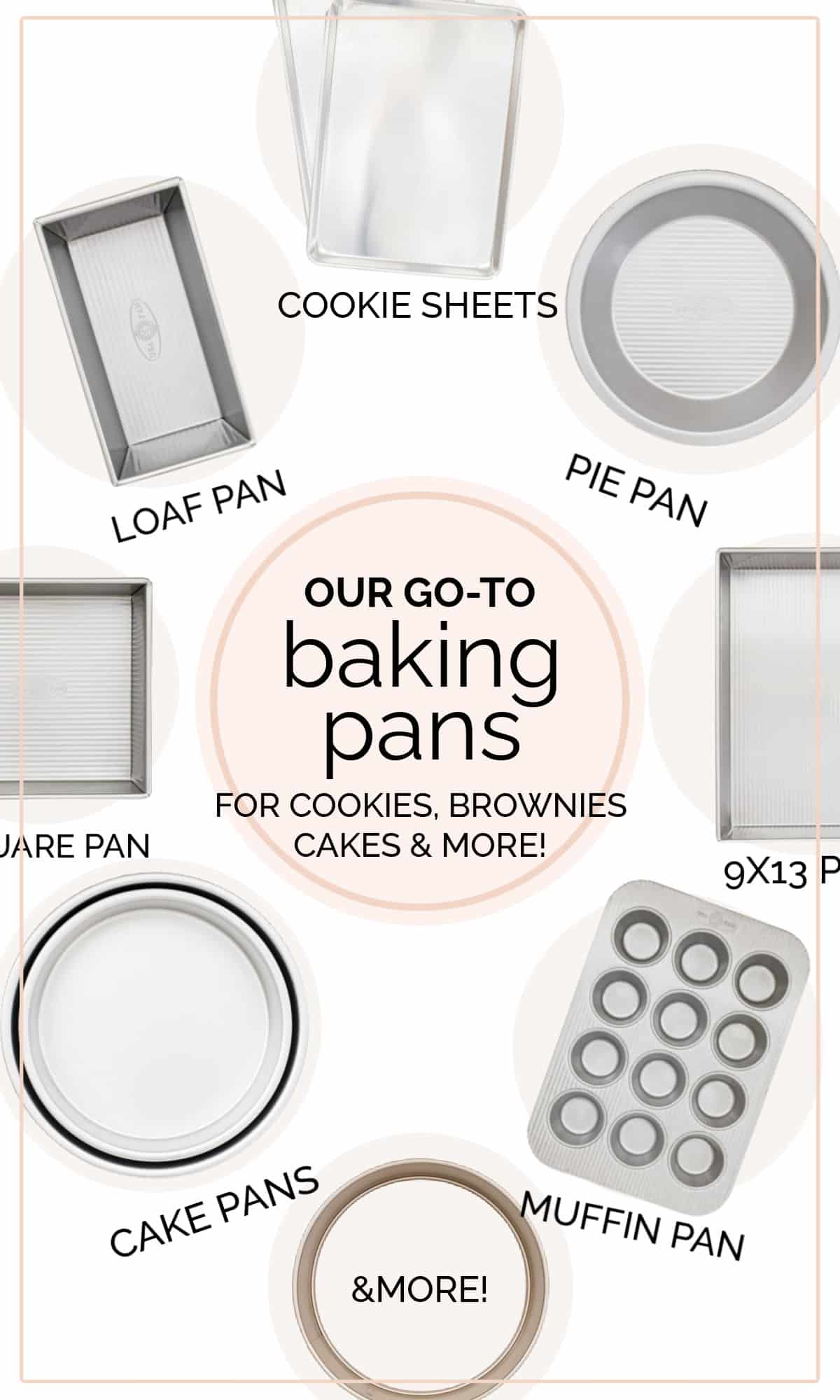Our Favorite Baking Pans
This post may contain affiliate links. See our disclosure policy for more.
These are the baking pans we use all the time. Find the best pan for cakes, cookies, brownies, and more!
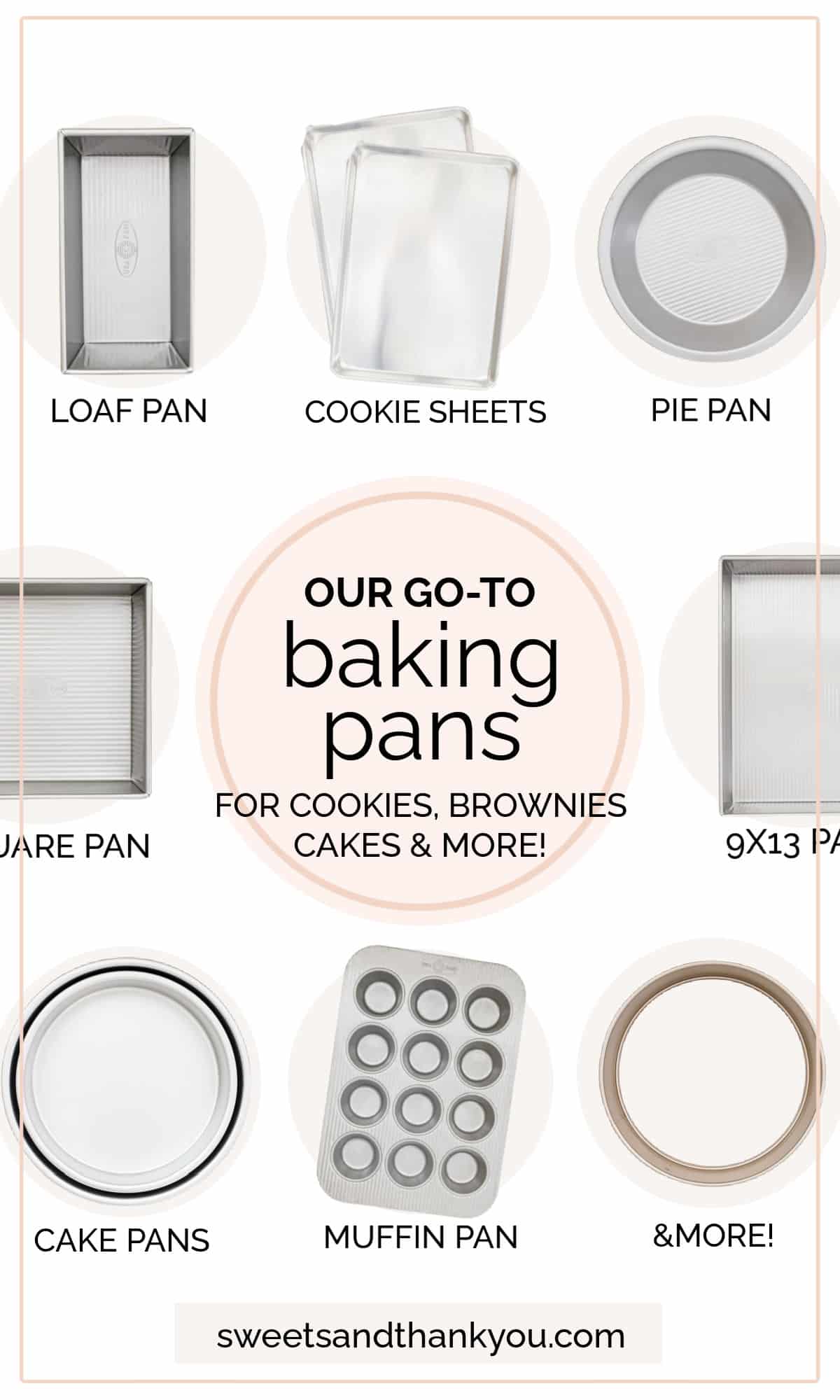
Whether you’re fed up with old or inconsistent pans, are stocking a new kitchen, or looking for a great gift idea for the baker in your life, today’s post is here to help!
I wanted to put all our favorite baking pans in one place so it would be easy to find the best pan for the job. We’ve done our research and put these pans to the test so you don’t have to!
So if you’ve ever asked yourself things like:
- “what’s the best kind of cake pan?”
- “should I use metal or glass pan for brownies?”
- “what’s the best brand of cookie sheets?”
We’ve got you covered! These are our most-used, most-loved pans for all the baking we do here at Sweets & Thank You.
A Few Brands We Love:
Before jumping into the specific pans, this post is not sponsored in any way. Every pan I use and recommend below is something I bought myself and have put to the test. There are several brands that you’ll see on repeat, so I wanted to call them out here:
- USA Pan. This brand has impressed me so much over the last few years. I’ve baked HUNDREDS of cookies, brownies, and cakes in these pans over the years, and I LOVE them.
- NordicWare. A classic for a reason! NordicWare has a great reputation for quality at an affordable price, and we agree!
- Wilton. A great budget-friendly brand, known especially for their cake pans.
- Fat Daddio. A favorite among cake bloggers, Fat Daddio pans are stellar for cake baking in all kinds of shapes and sizes.
Our Favorite Material For Baking Pans.
Another thing you’ll probably notice is that most of the pans we recommend are light-colored aluminum pans. These conduct heat most evenly, giving you gorgeously golden cookies, evenly baked cakes, and brownies, bars, and bakes that rise and brown evenly. This isn’t just a personal preference. It’s science! Glass and ceramic impact both the temperature distribution and the rise of baked goods.
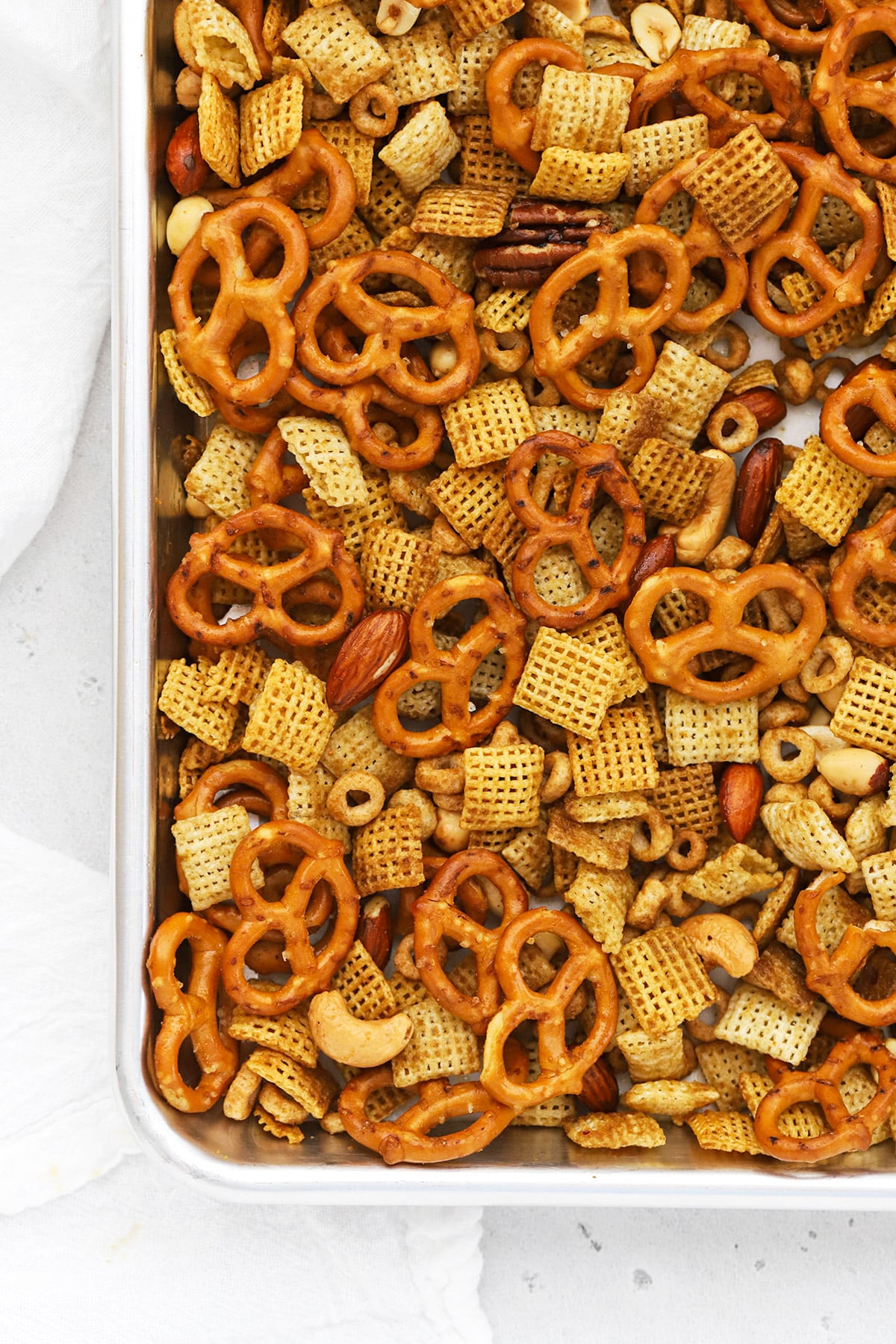
Cookie Sheets (Half Sheet Pans)
- OUR PICK: NordicWare, USA Pan, Orson Gygi
- USES: Cookies, snack mix, sheet cakes, chocolate curls, and more
Is there anything more versatile than a sheet pan? These large pans, known as half sheet pans or cookie sheets, are amazing for baking cookies, sheet cakes, and pumpkin bars. They’re also perfect for sheet pan dinners, making chocolate curls, mixing up a batch of snack mix and so much more.
- Light colored aluminum sheet pans conduct heat more gently and evenly than dark metal pans, which can scorch or overcook the bottoms of cookies, bars, and more.
- We recommend having at least 2 sheet pans, so you can alternate between batches. (you don’t want to put cold cookie dough on a hot baking pan, or it can impact the spread and bake of your cookies)
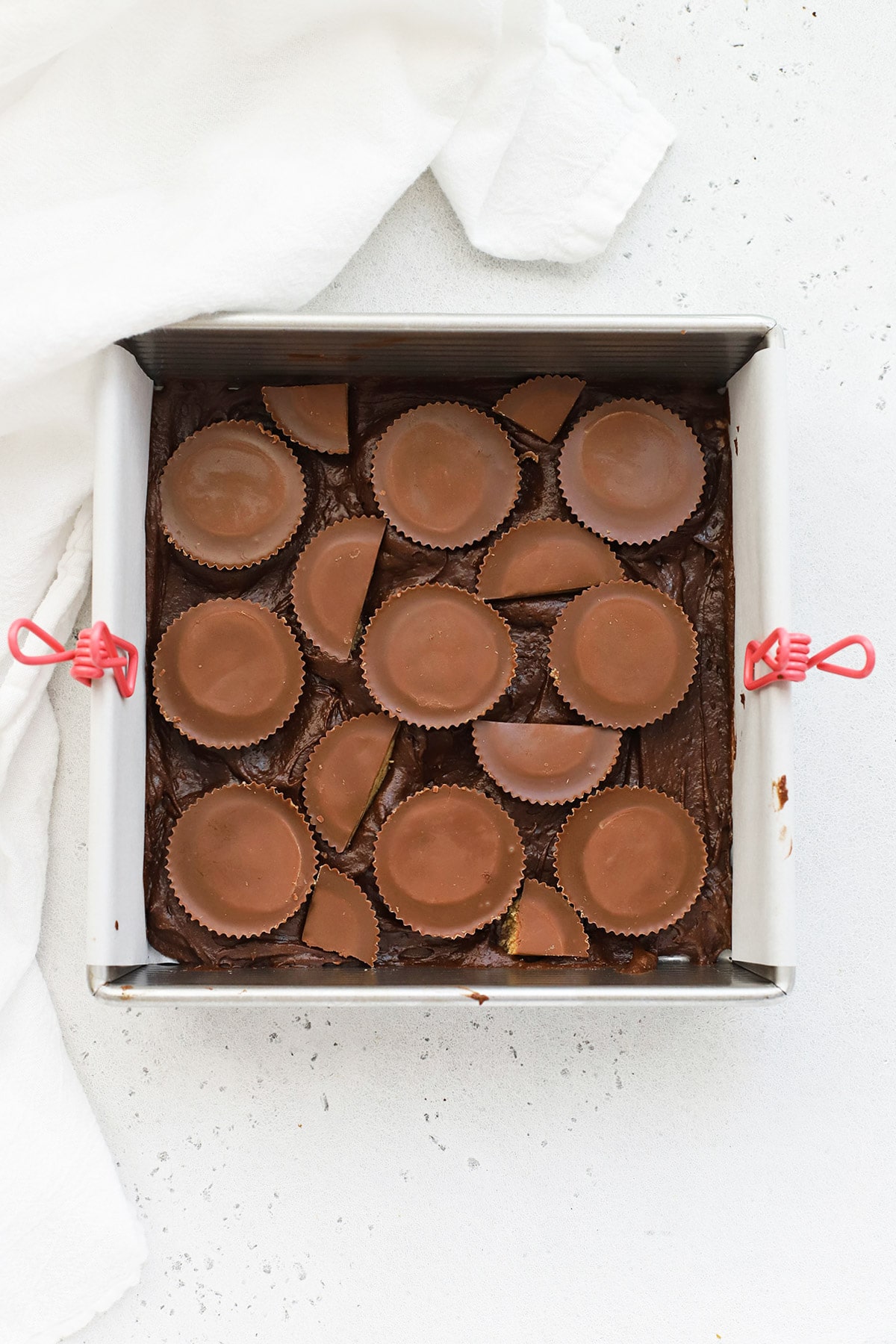
Square 8×8 Metal Pan
My second most used pan is an 8×8 metal pan. We use these for fudgy brownies, key lime pie bars, cookie bars, square cakes, and so much more.
- Light-colored metal pans conduct heat differently than glass or ceramic, and will give you more even, consistent bakes for everything from brownies and pie bars, to square cakes and small casseroles.
- Using a square pan with sharp edges will also help with you achieve even bakes, with perfectly square bars. We prefer sharp corners to rounded ones so every piece of your brownie can be cut evenly.
- Choose metal over ceramic or glass, unless your recipe specifically calls for them. Baking brownies in a metal pan, for instance, can drastically impact the shape and rise of your bake.
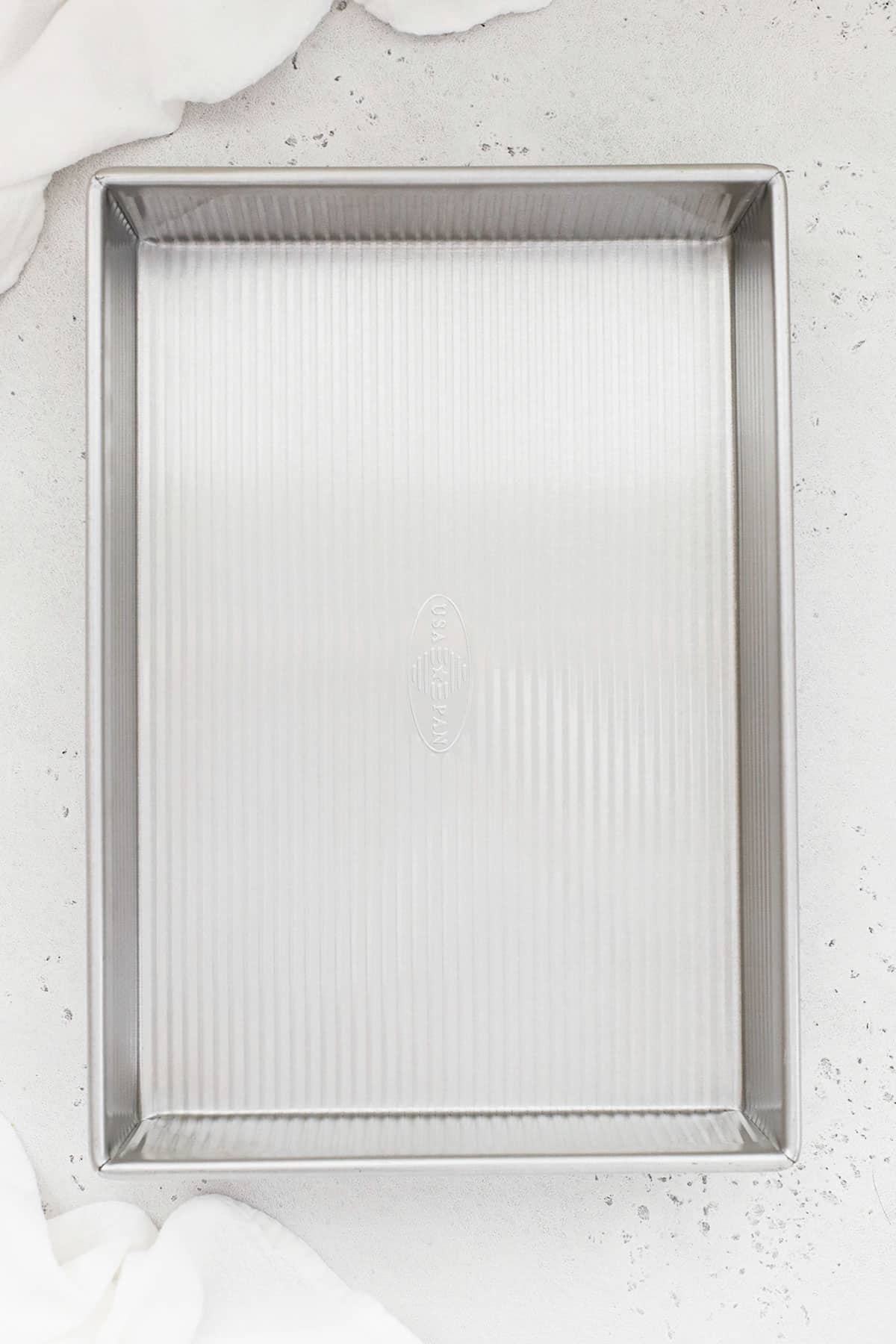
Metal 9×13 Pan
- OUR PICK: USA Pan
- USES: Sheet cake, large batches of brownies or rice krispies treats, casseroles
If you’re only going to buy one 9×13 pan, my top suggestion is a light-colored metal 9×13. It works well for baking sheet cakes or big pans of brownies, and it can also be used for no-bake bars and treats like scotcheroos or rice krispies treats..
- For Brownies, Bars & Sheet Cakes, a metal pan will give you the best bake. They conduct heat more evenly, so the cake will rise properly, brown properly, and won’t over-cook on the outside before the center is done. Glass and ceramic pans impact both the time and rise of your bake. They take longer to cook, brown less evenly, and can impact the rise of your bake (sometimes the cake or brownies will “climb” up the sides, leading to an uneven surface and giving a sunken look. (Check out a visual here!)
- Glass Or Ceramic 9×13 Pans can work well for things like lasagna, casseroles, and no-bake desserts, like Rice Krispies treats, since there’s no rising or leavening involved, but they’re not strictly necessary!
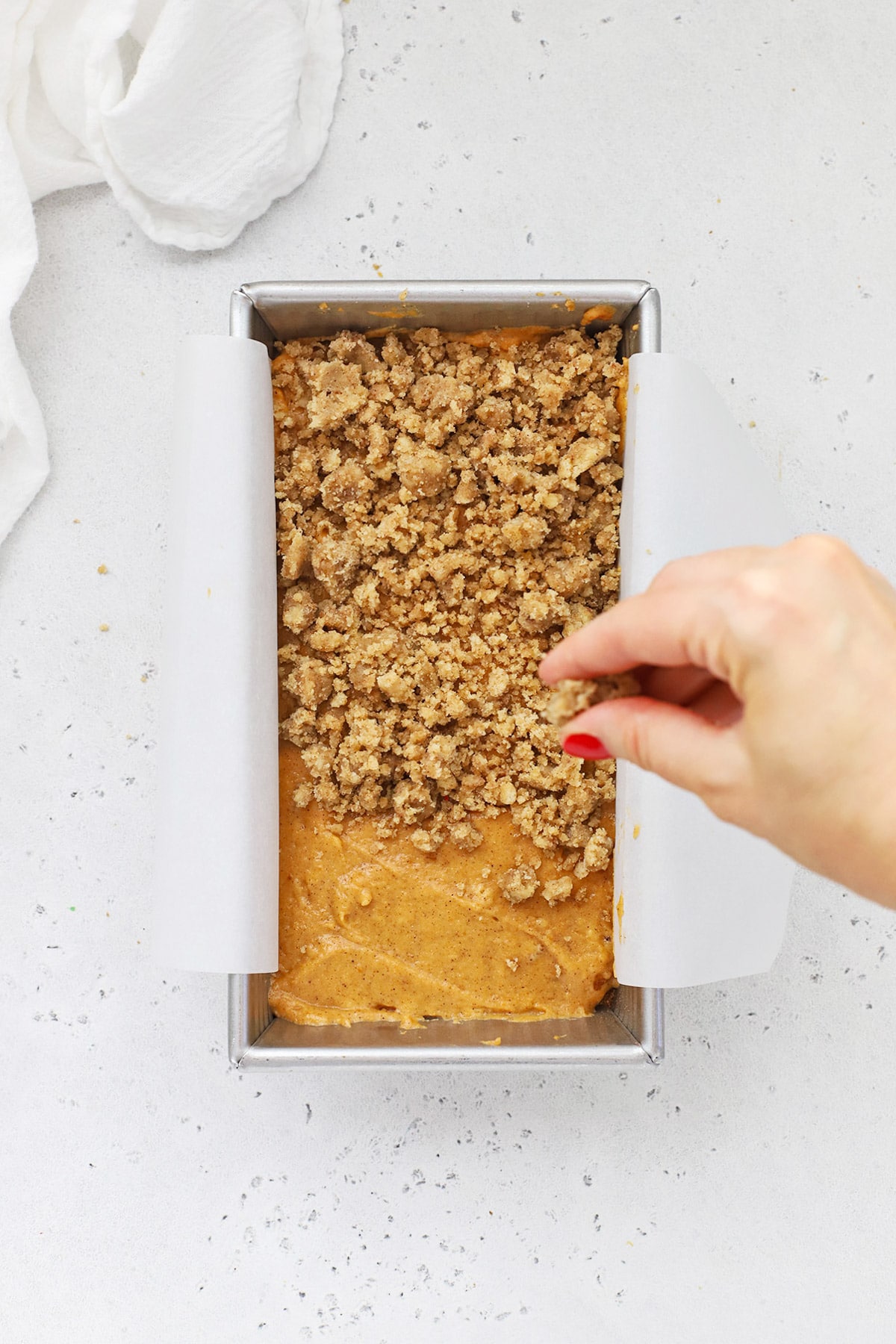
Loaf Pan
- OUR PICK: USA Pan, Wilton
- USES: Banana bread, yeasted breads, quick bread, loaf cake, pound cake, etc.
A great loaf pan will work for all kinds of kitchen projects, from loaf cakes to pumpkin bread, to sandwich bread, and more. In the United States, the standard size loaf pan is 8.5 x 4.5″. We recommend this size most often, and many other bloggers and bakers out there do, too.
- Light-colored pans conduct heat more evenly than dark metal, glass, or ceramic. This is especially important for loaf cakes and quick breads, which often require long bake times (sometimes over an hour!). Using light metal helps the outside turn golden without burning or drying out, while leaving enough time for the center of your loaf to cook through properly.
- Look for a brand with sharp edges. This is, admittedly, cosmetic. But for a bakery-level, professional look, I prefer brands with sharp edges.
- Avoid Ceramic Or Glass, unless your recipe specifically calls for it, as these materials cook more slowly, and distribute heat differently than metal.
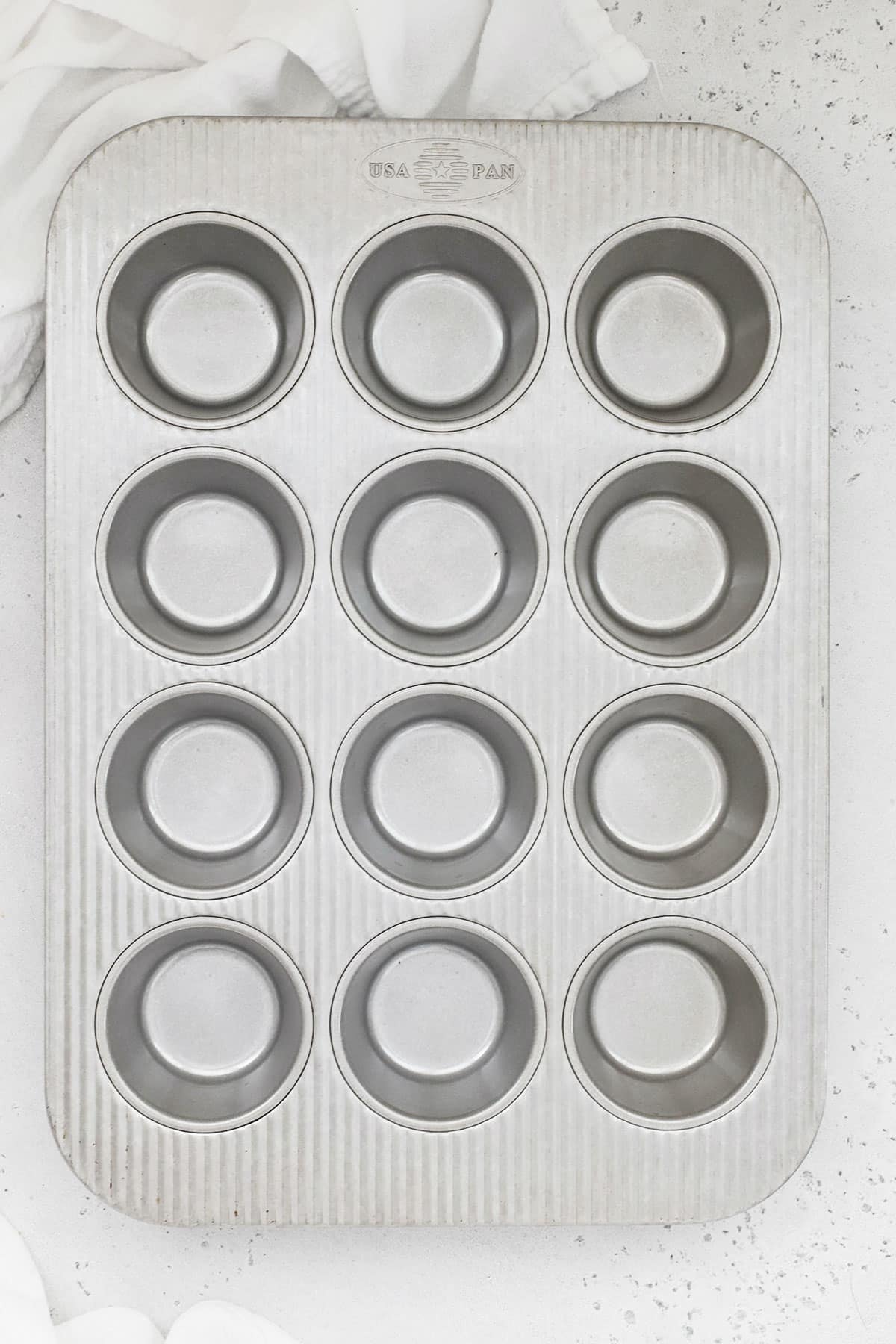
Muffin Pan/Cupcake Pan
There’s something so comfortable about a batch of muffins or cheery cupcakes, and a great pan will help get you the best muffins and cupcakes. Again, we’re going with light-colored metal. It bakes the most evenly–golden brown exterior that cooks gently enough to let the centers bake through without overcooking.
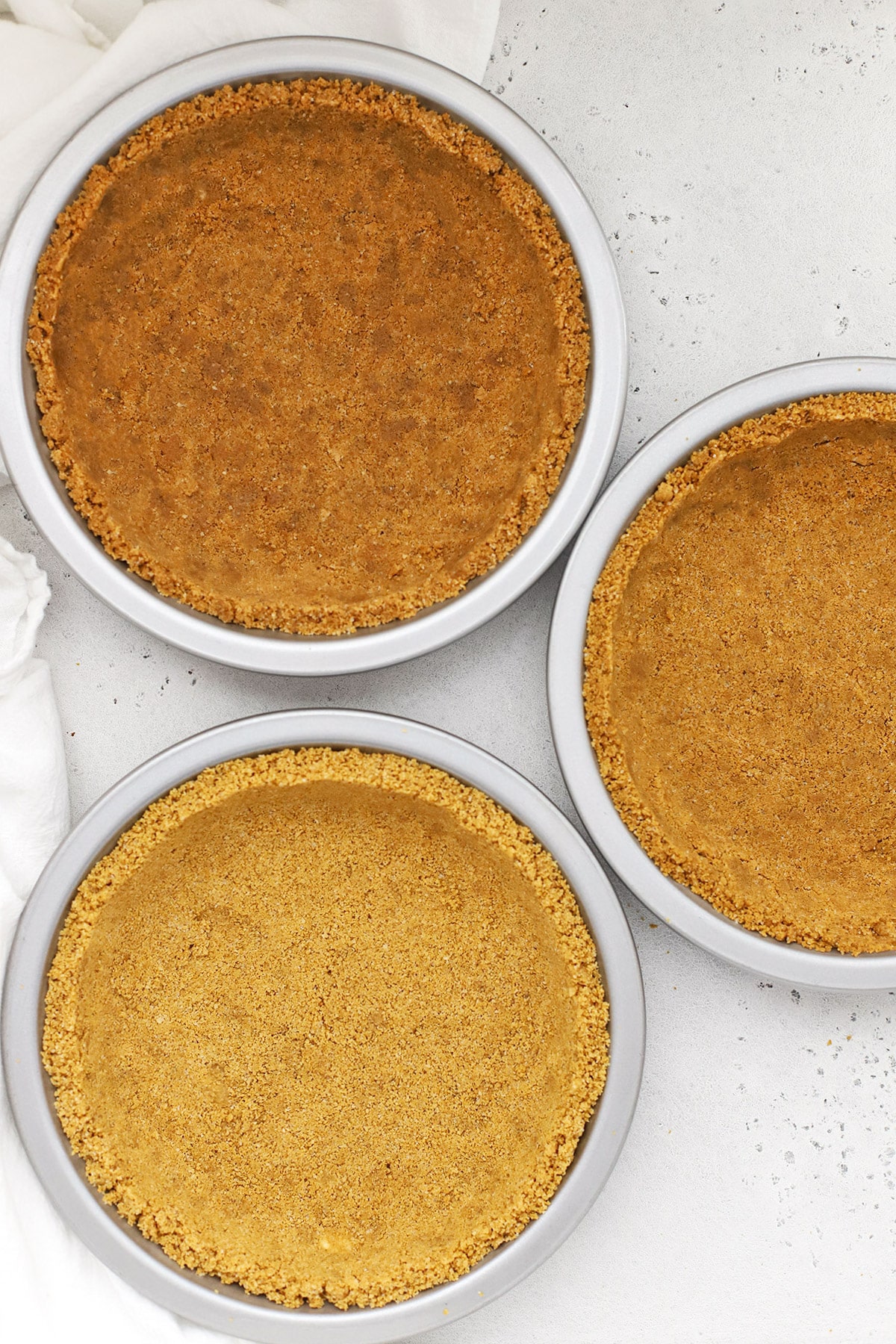
9-Inch Pie Pan
- OUR PICK: USA Pan
- USES: All the pies! Cream pies, graham cracker crust, Oreo crust, savory pies, and more.
The type of pie pan you use can have a big impact on the time it takes your pie to cook through, and this is one area where there are more right answers.
- For most pies, including cream pies, we use these 9-inch metal pie pans that conduct heat evenly, stack well, and wash well.
- For deep dish pies, we like these ceramic pie pans. Since you usually blind bake the crust (bake the crust for a bit before adding the filling), a ceramic pan can be a great choice since it takes longer to brown the bottom crust later. This will give the center of your deep dish pie more time to cook through before the crust browns.
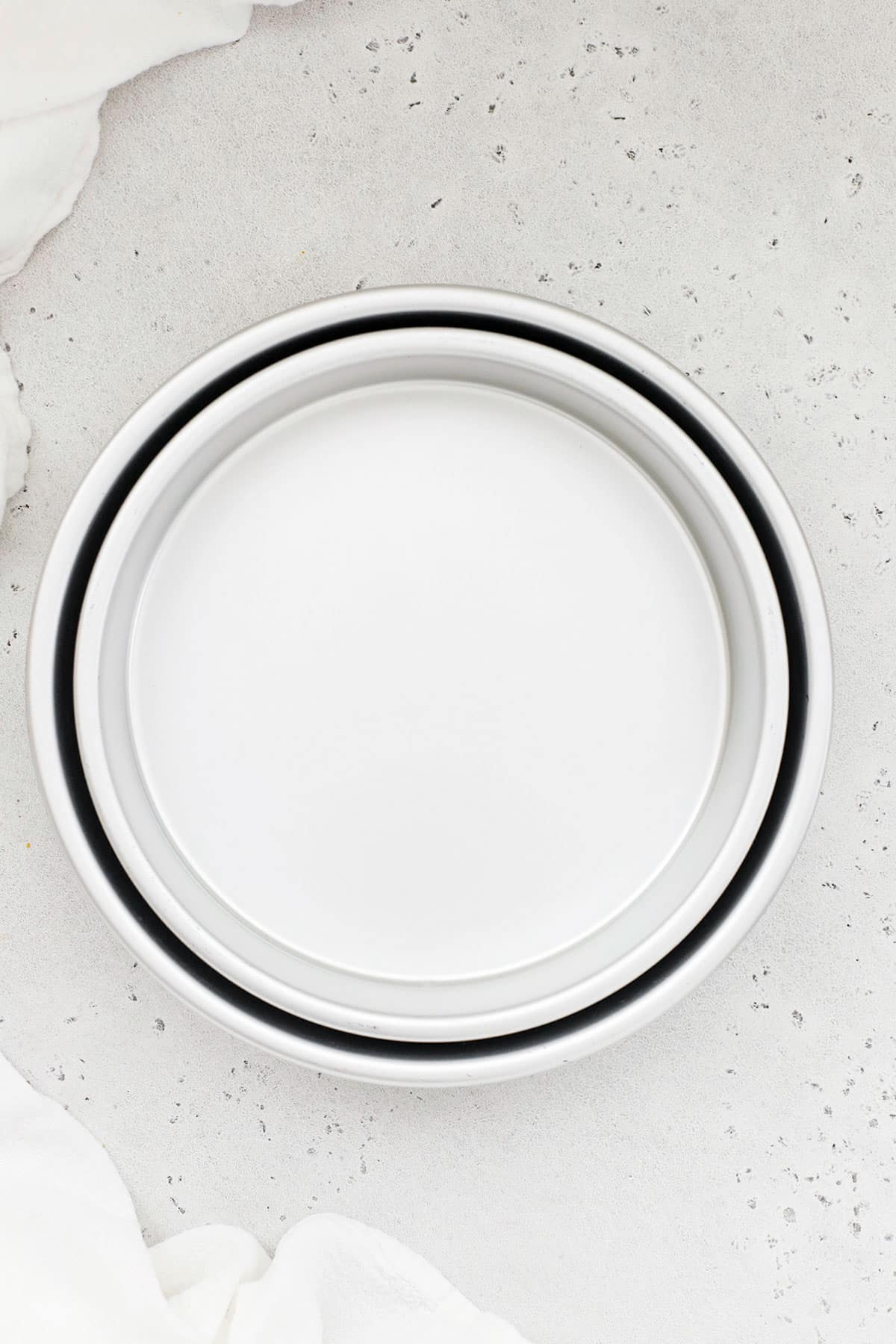
Round Cake Pans
- OUR PICK: USA Pan, Fat Daddio, Wilton
- USES: Layer cakes
Few things feel more fancy and cheerful than a layer cake! If you’re ready to dive into layer cakes, there are SO many sizes and shapes to choose from, but I gravitate toward 8-inch or 9-inch cake pans, since they work well for my needs.
- Lots of brands to choose from! Cake baking is kind of like sourdough in 2020, it’s got a fan following and more resources than ever to choose from! Fat Daddio, USA Pan, and Wilton are three of our favorites.
- Keep number in mind. Many recipes call for 2 (9-inch) layers or 3 (8-inch) layers. If you plan to bake more than 2 layers, I recommend keeping 3 pans on hand.
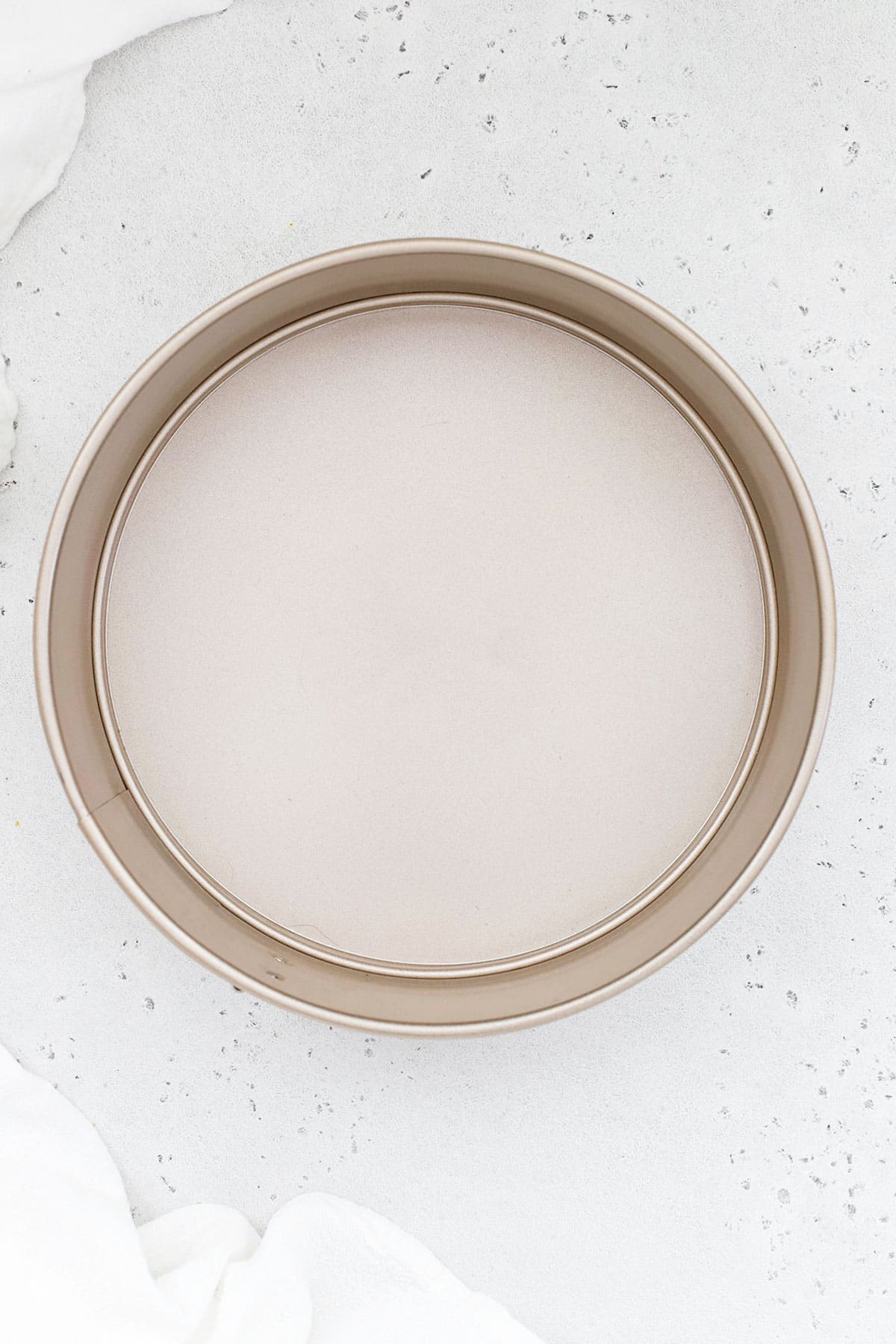
Specialty Pans We Love
- Bundt Pan. A 10-12 cup bundt pan will be large enough for most bundt cake recipes. The simpler design, the easier it will be to get the cake out of the pan. (This bundt pan is considered the easiest design to remove!)
- 9-Inch Springform Pan. These pans have removable sides, so the edges are perfect for cheesecakes and tarts. It’s 100% worth having for me!
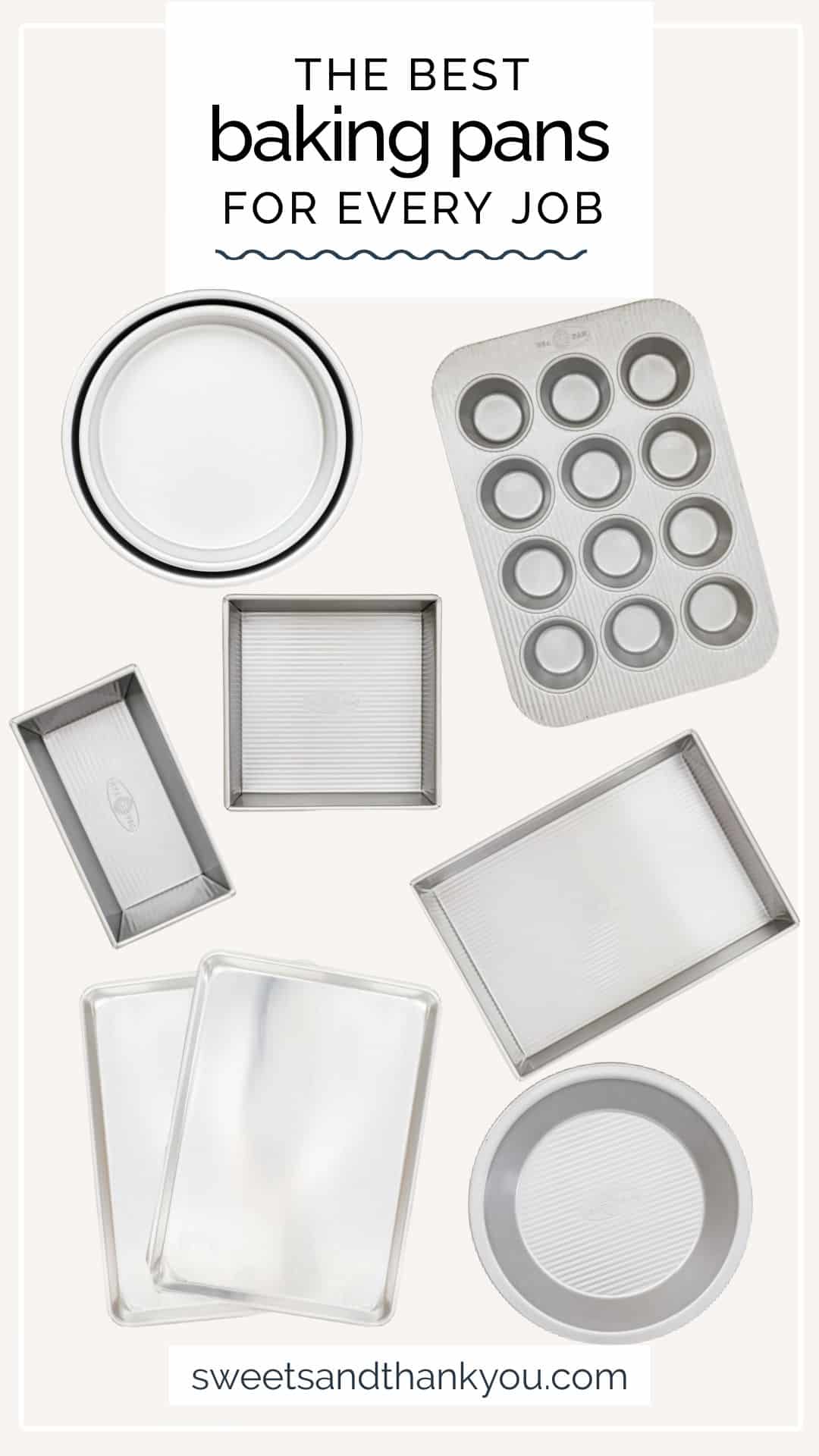
Tips & Tricks For Your Baking Pans:
- Hand Wash When You Can. It DOES make a big difference in the wear and tear on your pans. They’re less likely to warp, scuff, or tarnish when you hand wash them vs. putting them in the dishwasher.
- Dry them! Seems like a silly step, but this can help prevent build-up on your pans. Speaking of which…
- Line Them & Grease Properly. Another way to prevent sticking and build-up is to use parchment paper or grease your pans with butter or oil as directed. Most commercial baking sprays leave build-up on your pans, so if you’re using a spray, be sure that it’s 100% oil with no added flour, additives, or propellants.
- Be Mindful Of Your Utensils. Be gentle with utensils on your pans. Sharp spatulas and knives can cut or scrape up your pans.
WE ♥

